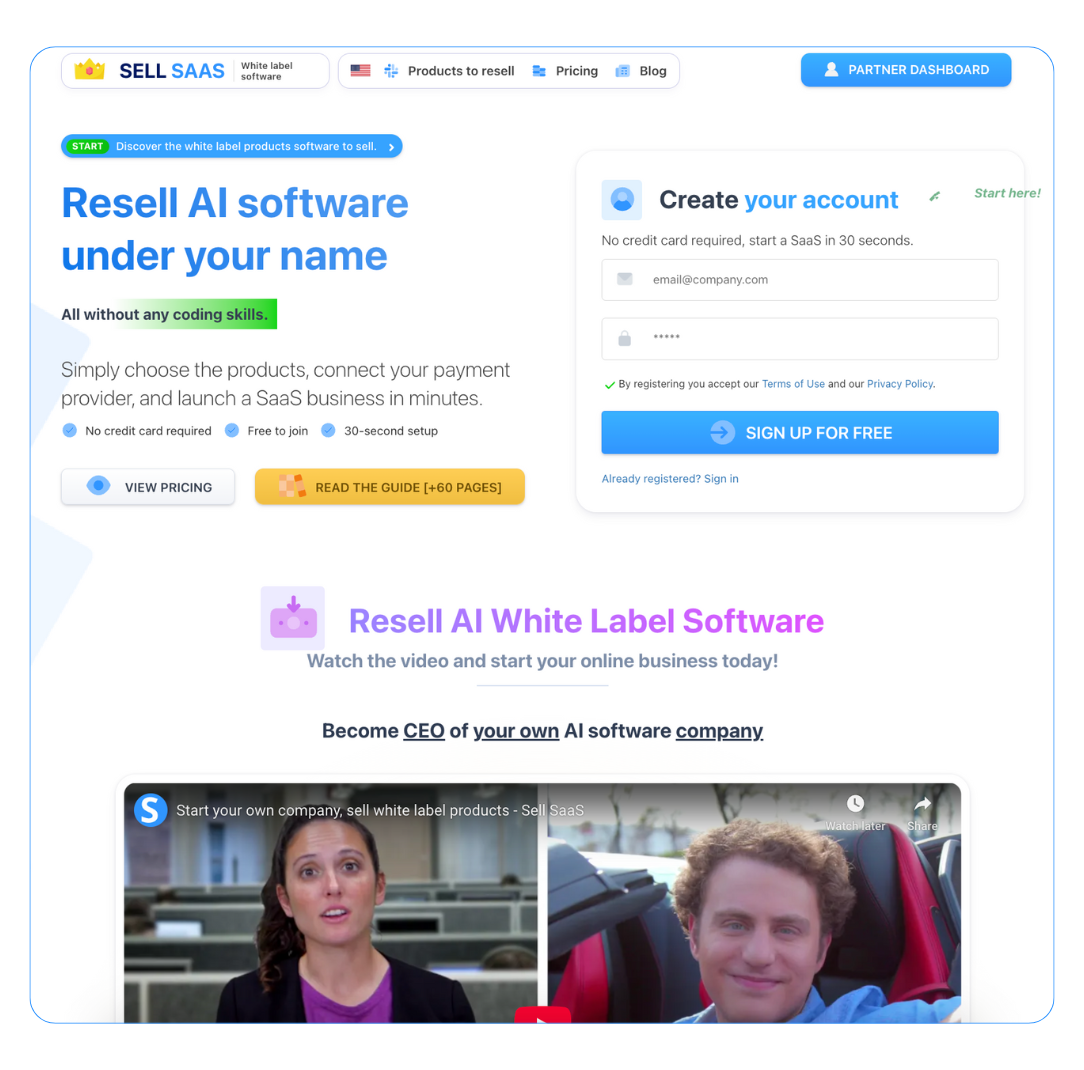
- 16th Oct '25
- Sell SaaS
- 6 minutes read
Bridging the Gap Between Hardware and SaaS: Why Reliable Electronics Power Scalable Software Businesses
Behind every high-performing software business lies dependable hardware quietly doing the heavy lifting. When hardware fails, even the most advanced software can’t deliver consistent results, making physical reliability a key factor in digital scalability. Thus, below, we examine how strong electronic foundations enable software companies to grow without compromising stability or user trust.
The Hardware Foundation of Every SaaS Ecosystem
Every SaaS platform relies on a complex web of hardware systems that bring software to life. Understanding this foundation reveals how data moves seamlessly between users and applications.
Networking Infrastructure and Data Flow
The ability of software to scale depends heavily on the efficiency of its communication systems. Routers, switches, and modems create pathways for information to travel within and between data centers. Fiber-optic and Ethernet cabling move massive volumes of data at high speed, while load balancers distribute traffic evenly across servers.
This interconnected system ensures that users can access applications instantly, irrespective of the number of users. These networking components require cable assemblies and wire harnesses to organize and protect the electrical connections from interference. Thus, companies like Cloom Tech can customize the harnesses to different network configurations, voltage requirements, and environmental conditions.
Power and Environmental Systems
Hardware performance depends on a consistent and well-managed energy supply. Power distribution units, voltage regulators, and backup systems ensure stable operations even during fluctuations or outages. Cooling systems, fans, and HVAC units maintain optimal temperature and airflow, preventing overheating that could disrupt data processing. Together, these systems form the physical environment that keeps hardware running smoothly under constant demand.
Core Processing and Storage Systems
At the center of every SaaS ecosystem are powerful servers and processors that execute billions of calculations each second. These units host applications, manage workloads, and run virtual machines that keep cloud platforms functional.
High-capacity storage drives—whether solid-state or traditional—preserve user data, backups, and analytics outputs. Memory modules (RAM) further enhance responsiveness by temporarily holding active data, allowing for fast retrieval and uninterrupted software performance.
Edge and Peripheral Components
Beyond centralized data centers, edge computing devices and IoT sensors extend SaaS capabilities to local environments. These components collect, process, and relay data closer to its source, reducing latency and improving real-time analytics. Peripheral elements, such as embedded systems, circuit boards, and communication modules, link physical processes to digital applications, bridging the gap between cloud infrastructure and user interaction.
Security and Control Hardware
Protecting cloud operations requires dedicated physical safeguards. Thus, hardware security modules, biometric access systems, and on-site monitoring equipment maintain the integrity of data and prevent unauthorized access. These devices ensure that only authenticated personnel and approved systems interact with critical infrastructure, preserving both operational stability and trust.
How Hardware Design Influences Software Scalability
The hardware discussed above should be reliable because it influences SaaS growth in the following ways:
Processing Efficiency
High-performance processors determine how effectively a SaaS platform manages multiple requests. Additionally, CPUs and GPUs with parallel processing capabilities divide workloads efficiently and minimize latency under heavy demand.
For example, multi-core architectures allow several operations to run simultaneously, ensuring that user interactions, analytics, and background tasks occur without delay. The inclusion of high-speed cache memory also enables faster data retrieval, improving responsiveness during peak activity. Each of these design features works together to maintain consistent software performance as user numbers and data loads increase.
Modular Expansion
A modular hardware framework allows organizations to scale operations without complete infrastructure overhauls. Instead of replacing entire systems, they can add new servers, storage units, or network components as demand grows. As a result, expansion becomes a continuous process rather than a disruptive event.
For instance, when user traffic increases, additional modules can be integrated seamlessly, redistributing workloads automatically. Moreover, this flexibility supports business agility by enabling companies to scale resources based on seasonal demand or new service rollouts.
Power and Thermal Management
Efficient power design directly influences scalability by keeping operations stable under varying loads. In particular, hardware equipped with intelligent power distribution units balances voltage across all components to prevent strain during high usage.
Advanced cooling systems, heat sinks, and airflow controls protect processors from overheating, which could otherwise cause throttling or shutdowns. Additionally, sensors continuously monitor thermal conditions, allowing automated adjustments before performance issues occur. This coordination between power efficiency and temperature control maintains optimal operating conditions, supporting sustained, large-scale performance.
Data Throughput and Bandwidth Capacity
Hardware built for high-speed communication enables SaaS applications to process data quickly and efficiently. Specifically, network interfaces optimized for bandwidth capacity allow smooth handling of simultaneous data transfers between users and servers.
Similarly, high-throughput internal buses and fast storage controllers transfer information across memory and storage systems rapidly, reducing latency in queries and updates. Thus, users experience faster loading times and real-time synchronization even as the platform scales.
Fault Tolerance and Redundancy
Scalable software depends on hardware that can maintain uptime despite unexpected failures. To achieve this, engineers design systems with redundant components such as mirrored drives, backup power units, and duplicate network links. When one element fails, another immediately takes over without interrupting service.
Additionally, predictive diagnostics detect potential faults in advance, allowing maintenance before disruptions occur. In contrast to single-point systems that risk total downtime, fault-tolerant hardware ensures stability through layered protection.
Interoperability and Integration
Hardware designed for interoperability allows easy communication between new and existing technologies. For example, adherence to standard interfaces such as PCIe, USB, or Ethernet simplifies integration with evolving devices and software modules.
Moreover, this compatibility minimizes configuration errors and reduces time spent on custom adjustments during scaling. As systems evolve, standardized hardware ensures a smooth rollout of new features and third-party integrations without disrupting ongoing operations.
Edge Computing Capability
Modern SaaS scalability extends beyond centralized servers through the edge computing model, where hardware with localized processing capabilities handles time-sensitive tasks closer to the user. As a result, latency drops dramatically, and bandwidth usage becomes more efficient.
For instance, devices that process sensor data or user interactions locally can deliver instant responses before syncing summarized results with the cloud. Additionally, this approach distributes computational load, easing pressure on core data centers and improving global responsiveness. Therefore, edge-ready hardware design ensures consistent performance across regions and enhances scalability in geographically dispersed systems.


Conclusion
Scalable software relies on more than great code—it depends on the strength and intelligence of its hardware foundation. Each component, from processors and servers to networking and edge devices, plays a role in how efficiently a platform grows and adapts. The design choices behind those systems determine not only performance but also how resilient a SaaS business becomes in the face of rising demand.
 Create your own software
Create your own software



